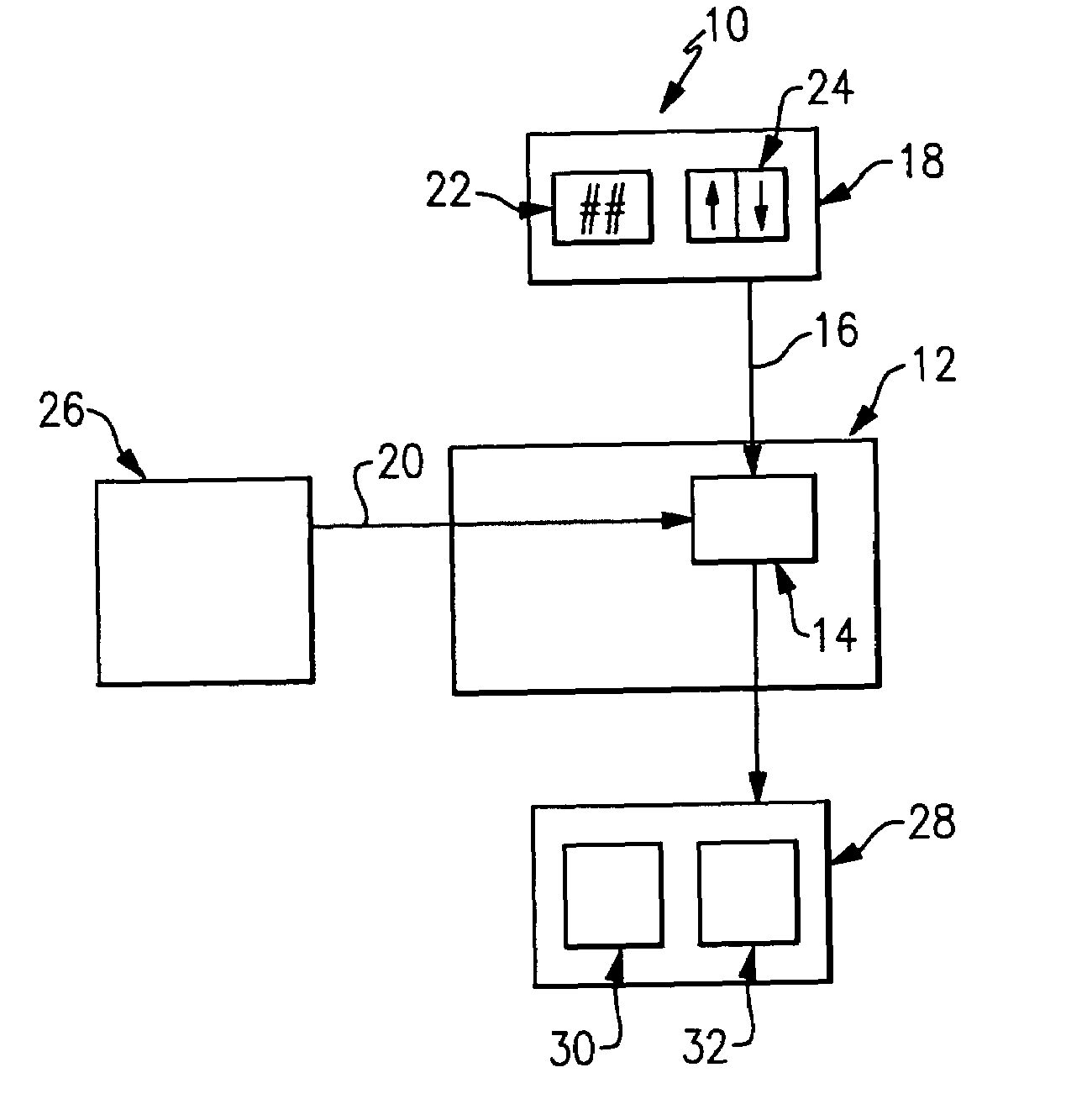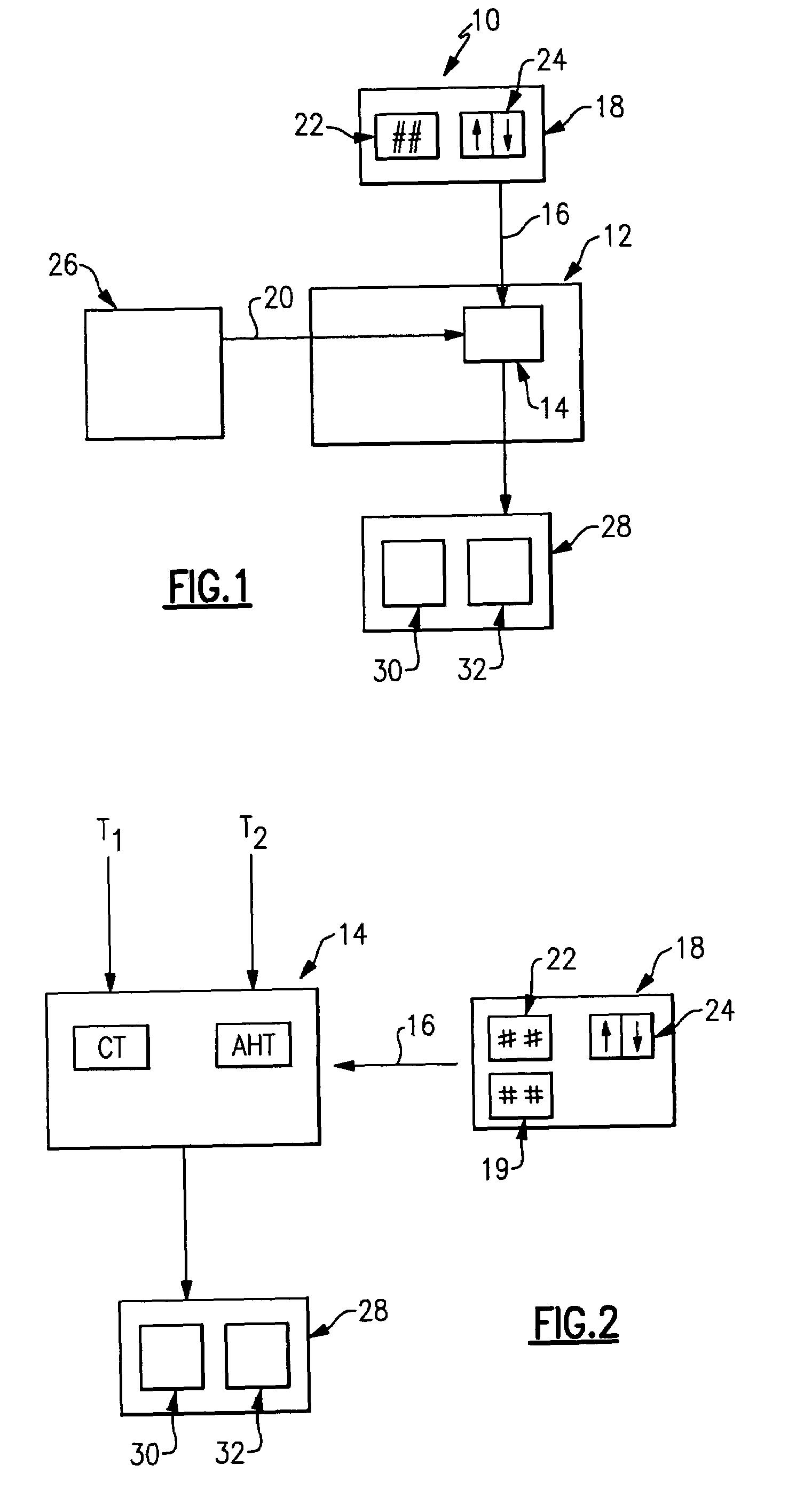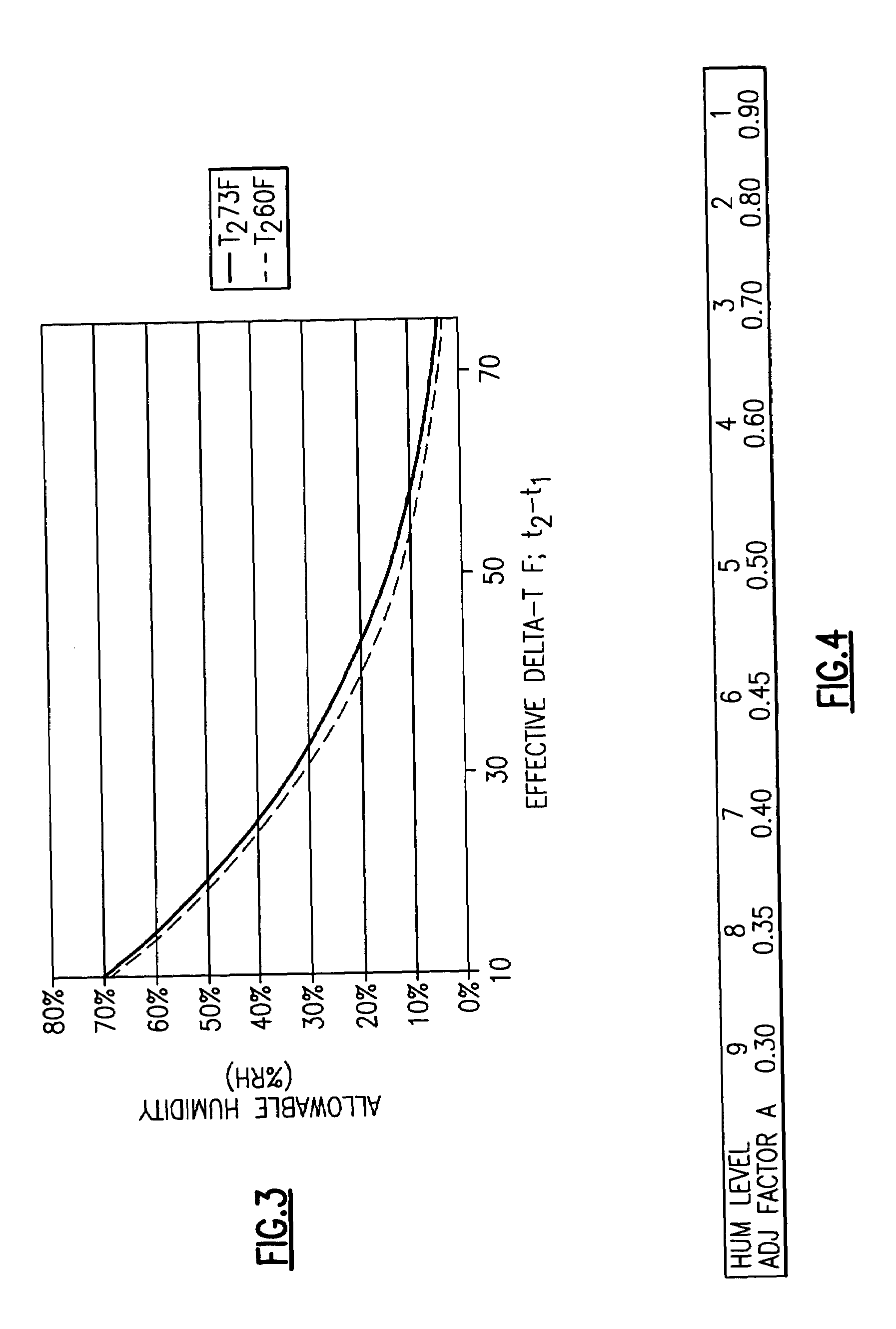Determination of maximum allowable humidity in indoor space to avoid condensation inside building envelope
a technology of indoor space and humidity, applied in the field of indoor central heating, ventilation and air conditioning (hvac) systems, can solve the problems of less insulation, less insulation, and the proportion of buildings that are affected by condensation, and achieve the effect of preventing condensation
- Summary
- Abstract
- Description
- Claims
- Application Information
AI Technical Summary
Benefits of technology
Problems solved by technology
Method used
Image
Examples
Embodiment Construction
[0022]A schematic view of a building HVAC system 10 is illustrated in FIG. 1. An indoor control unit 12 includes central control 14 which is operable to receive a user input 16 from a user interface 18 and at least one environmental input 20. The user input 16 is a heating humidity level 22 which is selected from a predetermined range. As shown, the level is adjusted by pressing up / down arrows 24 on the user interface 18. Of course other input devices can be utilized. An outdoor unit 26 is operable to transmit the environmental input 20 to the central control 14.
[0023]The central control 14 then calculates a desired indoor relative humidity based upon the user input 16 and the environmental input 20 and adjusts an actual indoor relative humidity to a value proximate the calculated desired indoor relative humidity by selectively activating / deactivating at least one indoor device 28. As is known, the indoor device 28 could be a humidifier 30, and / or a ventilator 32, or other humidity ...
PUM
 Login to View More
Login to View More Abstract
Description
Claims
Application Information
 Login to View More
Login to View More - R&D
- Intellectual Property
- Life Sciences
- Materials
- Tech Scout
- Unparalleled Data Quality
- Higher Quality Content
- 60% Fewer Hallucinations
Browse by: Latest US Patents, China's latest patents, Technical Efficacy Thesaurus, Application Domain, Technology Topic, Popular Technical Reports.
© 2025 PatSnap. All rights reserved.Legal|Privacy policy|Modern Slavery Act Transparency Statement|Sitemap|About US| Contact US: help@patsnap.com



